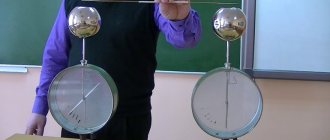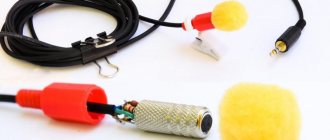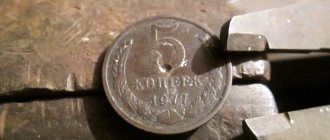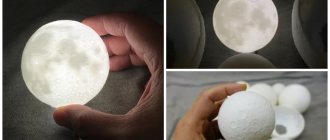Balloons are an addition to any event: birthday, wedding, first or last bell at school. Such cheerful and airy items will add more positive emotions to any festive setting. Plus, you can decorate a room with balloons and even make compositions.
But the most important feature is that they can float in the air. But, unfortunately, not all products can rise into the air, but only those filled with helium. In order to get this option, there are several ways: the first is to order from specialists, the second is to buy all the ingredients and do everything yourself. If you are inclined to the second option, then read our article: gas for balls at home - how to use it correctly.
What do they inflate and fill balloons with to make them fly?
If you inflate a balloon with your mouth, you will get a fun toy, great decor, but it will not fly like the balloons in the cartoon Up! In order for a balloon to fly, it must be filled with gas, which is several times lighter than air. Thus, according to the laws of physics, the air will push out the gas, and accordingly the ball will fly higher and higher, as long as the string holding it allows it.
What do they inflate and fill balloons with to make them fly?
What determines the flight duration of helium balloons?
The flight time of gas-filled balloons depends on the type of material used. In conventional balloons, helium quickly escapes from the pores of the shell material. That is why special latex balloons of a traditional round shape or any other are often used.
Round helium balloons float for up to 10 hours under normal environmental conditions. Balloons made of special foil retain gas much longer - up to several days. In addition, they are reusable and can always be refilled with gas or air.
How to inflate balloons with helium at home: methods
So, we know two types of filling balloons - one, with a regular pump or mouth, then the balls are light, but at the same time they are still drawn “to the ground”. These balls are good for decorating flat surfaces, as well as floors in photo zones.
The second filling method can be called “flying balloons”, since balloons are filled with gases that are lighter than air and therefore they rapidly rise up.
In the second method, there are two directions to inflate the balloon. The first one is more expensive, but the ball will please you for 2-3 weeks. This is a portable gas cylinder with liquid, which, penetrating into the balloon along with helium, forms a dense film inside the balloon and prevents gases from escaping through the latex. The second method is more economical, but it is worth noting that balloons inflated with soda and vinegar last only 12-14 hours.
How to inflate balloons using a helium balloon?
To work, you will need durable balloons and a portable tank with helium and liquid.
We put a ball on the balloon tube so that its edges are pressed tightly and sealed. We hold the balloon during operation so that it does not fly off and the helium is not wasted.
How to inflate balloons using a helium balloon?
We unscrew the valve and the ball begins to be filled through the tube. Please note that the process occurs quickly, and accordingly it is better to keep the valve open for no more than 3-4 seconds. It’s better to open the valve for a few seconds to add more, rather than overfill the balloon and cause it to burst.
Having closed the balloon, carefully remove the ball and immediately tie it; if you doubt the strength of the knot, you can make two.
All that remains is to tie the ribbon and decorate the room!
Explosive substitute
This analogue can be used only in extreme cases. The method is based on the reaction of copper sulfate, aluminum, sodium chloride in an aqueous medium ( CuSO4+Al+NaCl+H2O ). You can purchase hydrogen already prepared in cylinders or prepare it yourself using the following components:
- plastic bottle of any size;
- thin hose (from a dropper or hydraulic level);
- syringe;
- wine cork;
- copper and aluminum wire (instead of aluminum wire, you can use foil crumpled into a ball);
- copper sulfate;
- sealant;
- table salt.
You can find out how to get hydrogen using these ingredients for balloons at home on the Internet. Watch your favorite cooking video tutorial and experiment at home.
In conclusion, we would like to note that there are quite a large number of options for replacing helium at home. When choosing a replacement, focus on your needs, but resorting to independent use of hydrogen is not recommended. If you don’t know what to replace helium with, then there is no need to experiment at home. It’s better to go to the store and buy helium; don’t risk your health and life trying to save money or looking for a more affordable analogue.
Rules for inflating balloons with a pump
It seems easy to inflate balloons with your mouth, but when there are a lot of them, it’s a whole test for a person. So take a regular bicycle pump and put on a ball adapter, or a special ball pump.
Rules for inflating balloons with a pump
Now we put the ball on the tip of the pump and hold it so that the ball does not fly off, we will re-inflate it. After the balloon is inflated to the required size, carefully remove it and tie it in a knot. Ready!
Balls of thread. Cute unique home decorations
Many people are interested in how to make a ball of thread? These balls are very beautiful, delicate. They make excellent souvenirs and even chandeliers. To create it you need: not very thin threads, non-yellowing glue, Vaseline, a rubber ball.
Inflate the rubber ball to the desired size, apply a thin layer of Vaseline so that the threads do not stick to the ball.
The threads must be lubricated with glue (pour the glue into a convenient container and pull the thread through the glue). Wind the glued threads around the ball and let it dry thoroughly.
Then deflate the ball and carefully remove it through the threads. The ball can be decorated with flowers, beads, ribbons, etc. or use for restoration of chandeliers and other products.
A homemade ball is a wonderful home decoration and a cute toy that is always interesting.
How to easily and quickly inflate a thin balloon with your mouth?
It would seem that it could be easier than inflating a balloon with your mouth. If you think it's easy, then you've never inflated 100 balloons in an hour! Especially if these are high-quality, dense balls.
How to easily and quickly inflate a thin balloon with your mouth?
So, in order to simply and quickly inflate balloons with your mouth, you need to:
- Knead the ball: stretch it in different directions, but so as not to tear and there are no cracks;
- Now we take the ball and pinch it with our thumb and forefinger so that the tail is on one side and the hole on the other;
- We bring the ball to our lips and, as if we were kissing, pressing it to our lips;
- We take a big breath in through our nose and exhale through our mouth, and so on until the ball is completely inflated;
- Tired and need a break? Pinch your thumb and index finger together and take a breather. Have you rested? Bring it to your lips and continue to blow;
- At the end, just press with two fingers and tie the ball.
How and what to inflate balloons without helium to make it fly?
Do you have a goal to make the ball fly, but don’t have the budget to buy a balloon? We suggest doing without it and inflating it with hydrogen.
Required:
- A small flask or container of this type;
- Measuring spoon;
- Alkali - caustic soda or sodium hydroxide;
- Heated water;
- Foil.
Fill the flask halfway with warm water, tear the foil into small pieces and place it in the water. Add 3 heaped teaspoons of lye and quickly pull the ball itself onto the neck.
How and what to inflate balloons without helium to make it fly?
We begin to shake the flask so that the lye begins to interact with the foil, while holding the edge of the ball so that it does not fly off.
As soon as the foil dissolves in the liquid and the balloon is completely inflated, you must immediately remove the balloon from the neck and tie it in a knot, otherwise it will immediately begin to deflate.
Let us immediately note that this method is good for preparing a small number of balls, since the process is very long.
History of helium
This scientist discovered this substance to the world, quite by accident while studying the light of atoms. It must be said that helium as a substance was first isolated only in 1895. When you buy a balloon filled with helium for your child, you don’t think about how long it will last until the moment it finally deflates. Helium is sold in cylinders, and if you decide to purchase it, then get ready for the fact that the pleasure is not cheap.
How did Shgeliy originate?
If you are still interested in how to do this, then read our instructions and test your strength in chemistry. So, first you should know that 1/2 of the substance is located in the planet’s crust. Most of it is concentrated in a granite shell. Therefore, if you are firmly convinced that you need helium, then to extract it you will have to go into the mine, and you must understand that you need to get closer to the granite layer. In order for your desperate journey to bear fruit, you should prepare for it very thoroughly.
to contents ^
How to inflate a balloon using a bottle, soda and vinegar?
And this method is so simple and accessible that even a child can handle it. In addition, the ingredients can be found in any kitchen.
Required:
- 9% vinegar, sold in the nearest supermarket, and which is used for canning;
- Baking soda, which is purchased for baking;
- Plastic bottle with a capacity of 2 l;
- Spoon.
So, first, pour a liter of vinegar (half the container) into the bottle and prepare a ball. It is best if the work process is done with four hands. One pours a tablespoon of soda, and the second immediately pulls the ball. As in the previous methods, be sure to hold the tip of the ball.
How to inflate a balloon using a bottle, soda and vinegar?
As soon as it stops swelling, immediately remove it and tie it.
Copper sulfate and salt
Necessary materials:
- medical IV;
- a bottle with a capacity of one liter (preferably made of glass, since heat will be released during the reaction and the plastic may melt);
- copper sulfate – 100 g;
- table salt – 100-150 g;
- aluminum, preferably in the form of wire up to 2 m long;
- tap water – 0.7 l;
- balloon.
Process description:
- We make a hole in the bottle cap, the size of which should match the diameter of the plastic connector of the dropper with the needle. We immediately disconnect the needle; we won’t need it.
- We insert a plastic connector into the hole in the cork and secure it with superglue. After the glue has dried, we put a silicone dropper tube on the connector. Don't forget to turn off its dispenser.
- We cut off the part of the system that connects to the bottle with the medicine, as shown in the photo. We will put a balloon on it.
- We load copper sulfate and table salt into the bottle.
- Pour in the liquid and shake until the solution turns bright green.
- We load aluminum into the resulting solution. If it is wire, then it must first be bent in a zigzag manner to form a bundle, the size of which will freely pass through the neck of the bottle.
- It is worth noting that when aluminum gets into the solution, the reaction immediately begins, so the entire wire must be immersed at the same time, after which the bottle is closed with a stopper with a dropper attached to it.
- As a reminder, the solution will become very hot as hydrogen is released, so if you are using a plastic bottle, place it in a bucket of cold water before loading the aluminum. This will remove excess heat and keep the bottle from melting.
- During the reaction, the solution will become darker, almost black, and the aluminum will rust before your eyes, acquiring a rusty orange color.
- We put a ball on the dropper, open the valve and watch as the gas slowly fills it and it begins to rise. In order to facilitate the process, the ball should be pre-stretched by inflating and deflating it.
This way the balloon will be inflated without helium to fly, and the whole process will take you about 20 minutes.
How to inflate a balloon in a balloon?
In order to inflate a balloon in a balloon, you need to stretch the large balloon in different directions and carefully work out the neck.
Now we place a small ball inside so that the tail looks out from the large ball.
How to inflate a balloon in a balloon?
Inflate a small balloon, tie it and stuff it completely into the large balloon. We also repeat with the remaining 2-3 balls. Now take a large ball and inflate it. As the balls inflate, they will end up in free space and float there.
Using a chemical reaction
Chemists came up with an interesting way to inflate a balloon without a pump. For the experiment you need to have a plastic two-liter bottle, table vinegar, baking soda, and a ball. You can take several bottles and inflate 2-3 toys at the same time.
It will be fun for children to take part in a chemical experiment, but we must not forget about safety precautions. Put on glasses and gloves for the little experimenter so that he understands the importance of the situation and the danger to the eyes.
Fill the bottle with one-third of the vinegar. Next, pour a few tablespoons of baking soda through the funnel. Immediately after this, a balloon should be pulled over the neck of the bottle. During the chemical reaction, carbon dioxide will be released and fill the volume of the ball. When the latter is inflated to the desired size, holding the hole with your fingers, remove the ball from the bottle and tie it with one of the already known knot options.
These were ways to inflate a balloon without a pump. But the process can be carried out with its help.
How to inflate a balloon if it doesn’t inflate: tips
Sometimes, especially when you have a large package of balloons in your hands and there is no time or money to run to the store for new balloons, they stubbornly do not inflate. There are several tips that will help you inflate any balloon.
A container of warm water - add the balls and let them sit for a few minutes. (warm, but not hot!)
Now gently stretch them in different directions with your hands and place them on a towel so that all the moisture from their surface is absorbed.
We inflate, fighting against resistance (the first 1-3 exhalations), then the ball will begin to inflate much easier.
If a child wants to inflate, but he can’t do it, inflate and deflate the balloon and only after that give it to the child. Thus, the child will easily overcome the resistance in the pre-stretched ball.
For those who like to do everything themselves
If you need to prepare and blow a small number of colored bubbles, you can use the following “innovative” ideas:
- use the reaction of copper sulfate with table salt;
- obtain gas from the combination of soda and acetic acid.
When you plan to make jewelry from a large number of elements, it is better to use a container for gel balls.











